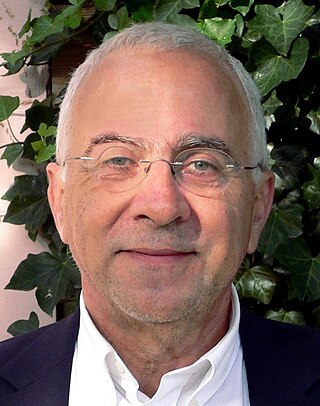Three components of the model
The triple helix model of innovation, as theorized by Etzkowitz and Leydesdorff, is based on the interactions between the three following elements and their associated 'initial role': [9] universities engaging in basic research, industries producing commercial goods and governments that are regulating markets. [2] As interactions increase within this framework, each component evolves to adopt some characteristics of the other institution, which then gives rise to hybrid institutions. Bilateral interactions exist between university, industry and government.
University-industry interactions
Etzkowitz and Leydesdorff argue that the initial role of universities is to provide education to individuals and basic research. Therefore, interactions between university and industry revolve initially around those two elements. In a linear model of innovation, universities are supposed to provide the research which industry will build upon to produce commercial goods. The other interactions take place through the involvement of industry managers and university faculty in both sectors. According to Etzkowitz, the transfer of people between university and industry constitutes a very important transfer of knowledge. This can be a permanent move in one direction or the other, or in other cases, entire careers spent between the two spheres. He gives the example of Carl Djerassi, a research director for a pharmaceutical company who joined Stanford University while continuing his industrial activity. [2]
However, other scholars have pointed out that consulting activities of faculty members could also have drawbacks, like a reduced focus on educating the students, and potential conflict of interests relating to the use of university resources for the benefit of industry. [10] Additional transfer of knowledge between university and industry happens through informal communication, conferences or industrial interest in university publications. [11] Another type of interaction, for example, is the creation of co-op programs like the MIT-General Electric course [12] which aims at integrating an industry approach into the students' curricula.
University-government interactions
The strength of the interactions between the government and universities depends on the government's general relationship to and policy towards higher education. Etzkowitz and Leydesdorff's model uses a spectrum to define the extent of these interactions. On the one hand, when higher education is largely public, as in continental western Europe, the government has a higher influence on universities and the research they conduct by being the main source of funding. [6] On the other end of the spectrum, typically associated with the United States, universities still receive some government funding but overall have a higher degree of independence from government influence. However, the two ends of this spectrum are used as ideal-types that are not necessarily reflective of the reality. [13] The changing circumstances can push the government to create closer ties with academia, for example in wartime, and/or through funding of strategic disciplines, like physics. For example, in the United States, the Department of Defense has extensively funded physics research during World War II and the Cold War. [14] Another example of state involvement in higher education is the establishment of new universities, as through the Morrill Land-Grant Acts of 1862 encouraging the creation of land-grant colleges. [15] Cornell University, the University of Florida and Purdue University are three of the seventy-six institutions created under the land-grant.
Government-industry interactions
The relationship between governments and industry depends on the government's attitude towards the market. In liberal economies the role of the government will be limited to preventing market failures. On the other hand, where the government is more involved in the economy, the government's role is the regulation of the industry. These are also two ends of a spectrum, leaving room for substantial variation, based on circumstances and disciplines. [6] For example, as pointed out by Bhaven Sampat, in the 1960s, the government created a regulation to prevent patenting by or licensing to industry of university research funded by the National Institutes of Health. [11] One key role of the government in its interaction with industry is the establishment of intellectual property law and its enforcement.
Strength of interaction



Etzkowitz and Leydesdorff initially argued that the strength of the interactions between governments, industry and university depends on which component is the driving force in the framework. In a statist model, a strong state is driving interactions between the three components in a top-down implementation. [13] It creates stronger ties and a more integrated model. In a laissez-faire model, in which the industry and market forces are the leading forces, the ties are weaker and each institution tends to remain very independent. However, the distinction between the two models is not always clear cut, as the government can choose to adopt a strong or a weak stance depending on the context and the industry. [6] Strength of interactions can also vary according to the development of a country, with a silo model predominating in an underdeveloped country, moderate interactions developing in a middle-income country due to the push for economic growth on the one hand and the pull for a competitive market-driven technological advancement on the other, and strong interactions developing in a developed country, for example in the form of a science park. [16] In a recent paper, Etzkowitz emphasized that the shift towards a knowledge-based society has given a bigger role to universities. Indeed, as innovation is increasingly based on scientific knowledge, the role of universities as creators of knowledge is more valued. [17] As a result, he argues that university, industry and government are more equal, [5] and that no particular element is necessarily the driving force of the triple helix model of innovation.






